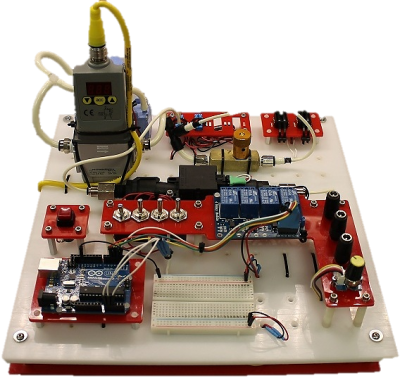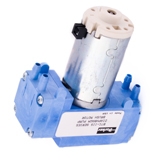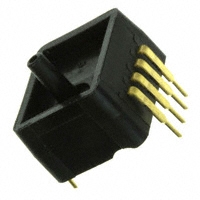Assembly
|
This section lists the parts needed to build your own pneumatic control board, and gives an overview of the assembly steps involved. See the previous section for a discussion of alternative components you might want to use, for example if you need to use water instead of air as your operating fluid. The overall assembly process will remain the same. Drawing files (.dxf) of the laser cut acrylic parts can be downloaded by clicking here, and the Arduino code we will use can be downloaded by clicking here. |
 |
Building the board involves some basic soldering. If you have never soldered before there are many useful introductory tutorials online. The video below (taken from this tutorial from SparkFun) gives a good introduction to the basic techniques and equipment for soldering.
| Control Board Lasercut Part Files (.zip) | 94 KB | |
| Control Board Sample Arduino Code (.txt) | 3 KB |
Bill of Materials
Major Components
|
|
|
|
Miniature Diaphragm Pneumatic Pump |
Miniature Electronic Pressure Regulator |
|
|
|
|
Miniature Pneumatic Solenoid Valve (x4) |
One-Way Pneumatic Air Flow Control Valve* |
|
|
|
|
Pressure Sensor
|
Flow Sensor*
|
 |
 |
|
4-channel 5V Relay Module for Arduino |
Arduino UNO
|
*Optional: can be omitted.
Base
These parts simply hold the above components in place. Use a laser cutter (make sure you are trained first!) to cut these pieces out of acrylic sheets. We use 3mm acrylic for all parts except the base board (6mm acrylic). Cut 2 copies of the base board. Download the .dxf files for cutting here.
 |
 |
| Pump on/off switch | Solenoid valves |
 |
 |
| Arduino | Relays, power plugs, and toggle switches |
 |
 |
| Pressure sensors | Base board (12"x12" / 300mmx300mm) |
| Control Board Lasercut Part Files (.zip) | 94 KB | |
| Control Board Sample Arduino Code (.txt) | 3 KB |
Assembling the Board
Mounting
At each corner of the baseboard, install a standoff using a single screw with a plain washer. This elevates the board to make room for the wires/connections underneath.
Solder any necessary wires to all the electronic components (follow the data sheets and the below wiring diagram). Using heat shrink tubing may also be a good idea to prevent shorts. Next, mount all the of the components onto the baseboard, following the image below. Use zip ties, screws, washers, nuts and spacers wherever needed. Connect the air flow between components using appropriate tubing.

Wiring
Now that all the components are in place, they need to be connected to each other, following the wiring diagram below. A good place to start is by connecting all the components to power. Use red and black wires to represent voltage supply and common (ground), respectively. It may be helpful to use a bus to manage the various power wires.
When connecting signal wires, be careful not to mix up the Arduino's digital and analog pins (analog pins are prefaced by 'A'). Use the breadboard as an intermediate between the components and the Arduino to help keep all the wires organized.
Before connecting the control board to power, make sure there are no short-circuits. If the board doesn't work properly at first, use a multi-meter to diagnose the problem and double-check your wiring. After connecting all the power plugs, make sure none of the components are getting too hot!
Note: The pressure regulator takes a control signal going up to 10V, however, the Arduino will only output up to 5V. If you need regulation at higher pressures, use an operational amplifier on the breadboard to modify the control signal accordingly.






